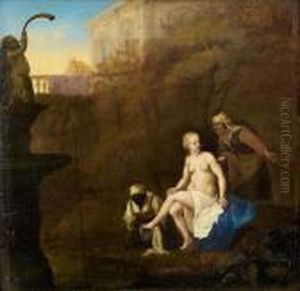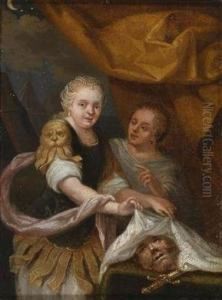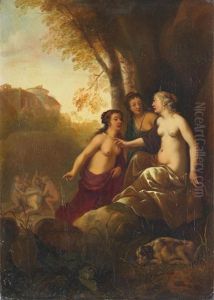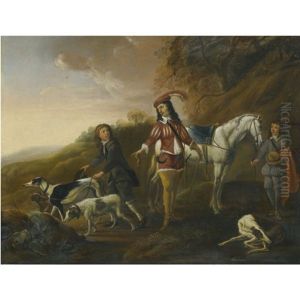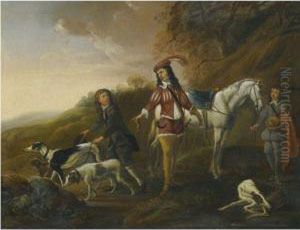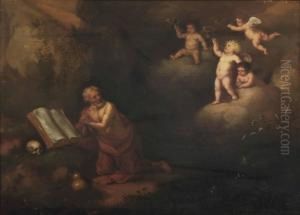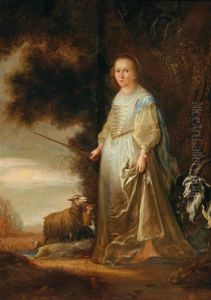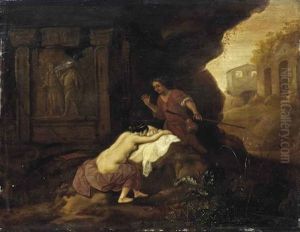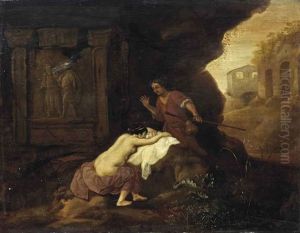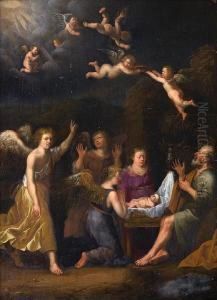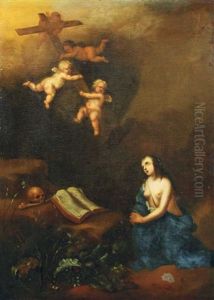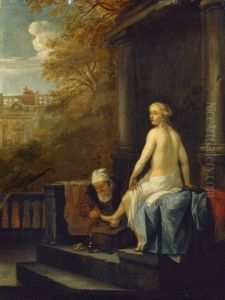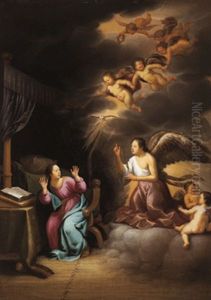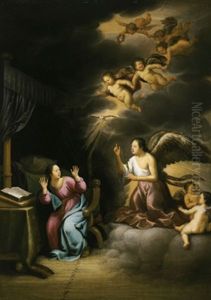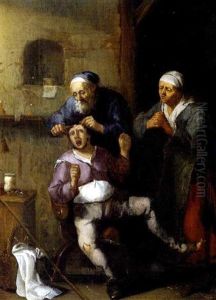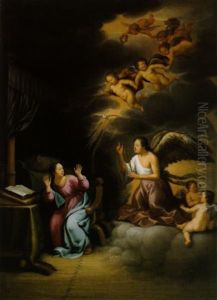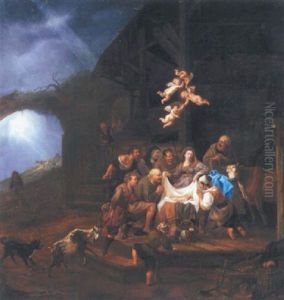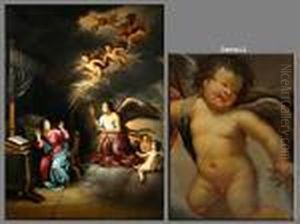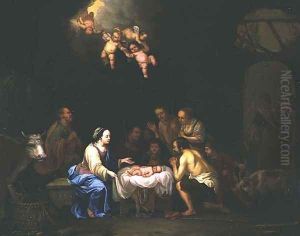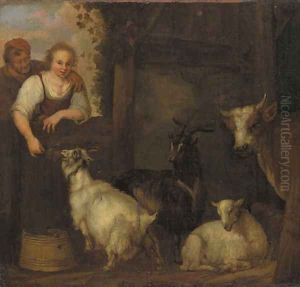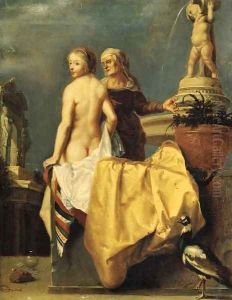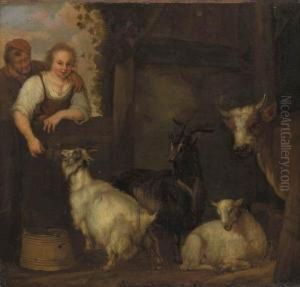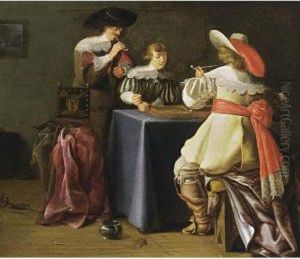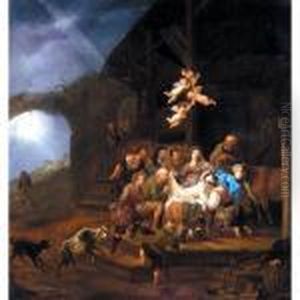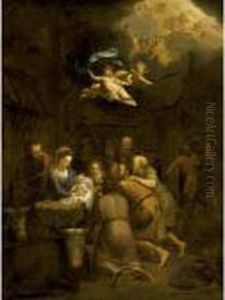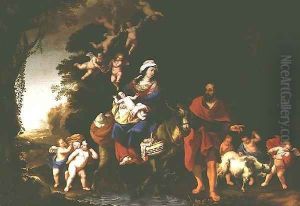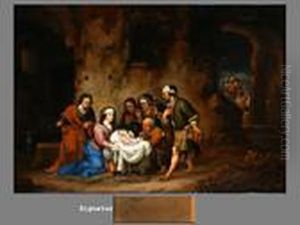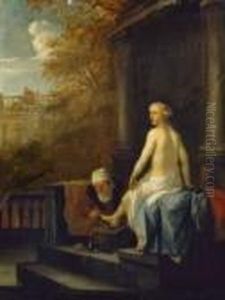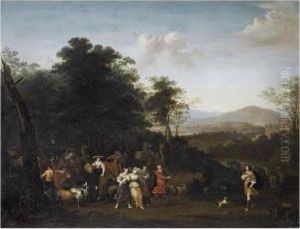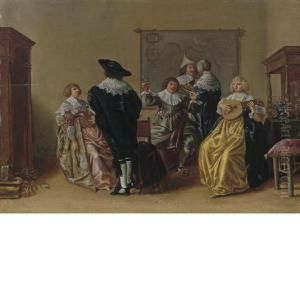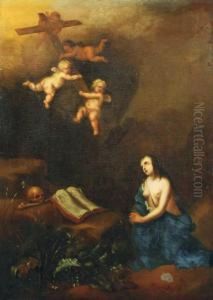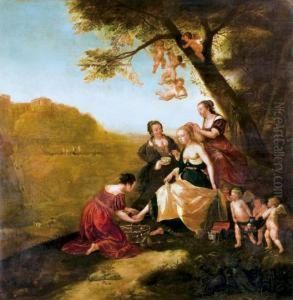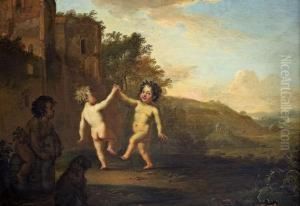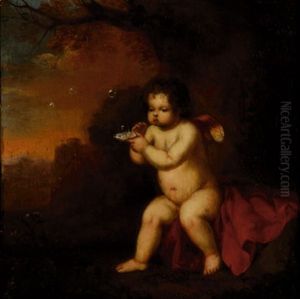Francois Verwilt Paintings
Francois Verwilt was a Dutch Golden Age painter born in Rotterdam in 1623. His artistic career unfolded during a period when the Dutch Republic was experiencing an unprecedented economic boom, which led to a flourishing art market. Verwilt was primarily known for being a genre painter, focusing on detailed interior scenes that often depicted people engaged in daily activities, showcasing the social customs and material wealth of the time.
Verwilt trained under the artist Cornelis Saftleven in Rotterdam, who was known for his own genre scenes as well as landscapes and animal paintings. This tutelage helped shape Verwilt's style and his attention to detail. His works were characterized by fine brushwork and a keen observation of textures and light effects, which helped to create a sense of realism in his depictions.
Though not as widely recognized as some of his contemporaries like Rembrandt or Vermeer, Verwilt contributed to the rich tapestry of Dutch genre painting. His paintings were appreciated for their narrative quality, often capturing moments that told a story or conveyed a moral lesson, which was a common theme in Dutch art at the time.
Throughout his career, Verwilt remained active in Rotterdam and became a member of the Saint Luke's Guild, where he took on students and apprentices. The guild system played a crucial role in the art community by regulating the art market, ensuring quality, and providing training for the next generation of artists.
Francois Verwilt's art provides a window into the everyday life of the Dutch during the 17th century. His legacy survives through the paintings that remain, which continue to offer insights into the cultural and social dynamics of his time. He passed away in 1691, leaving behind a body of work that, while not as extensive as some of his peers, still holds a place in the history of Dutch painting.
